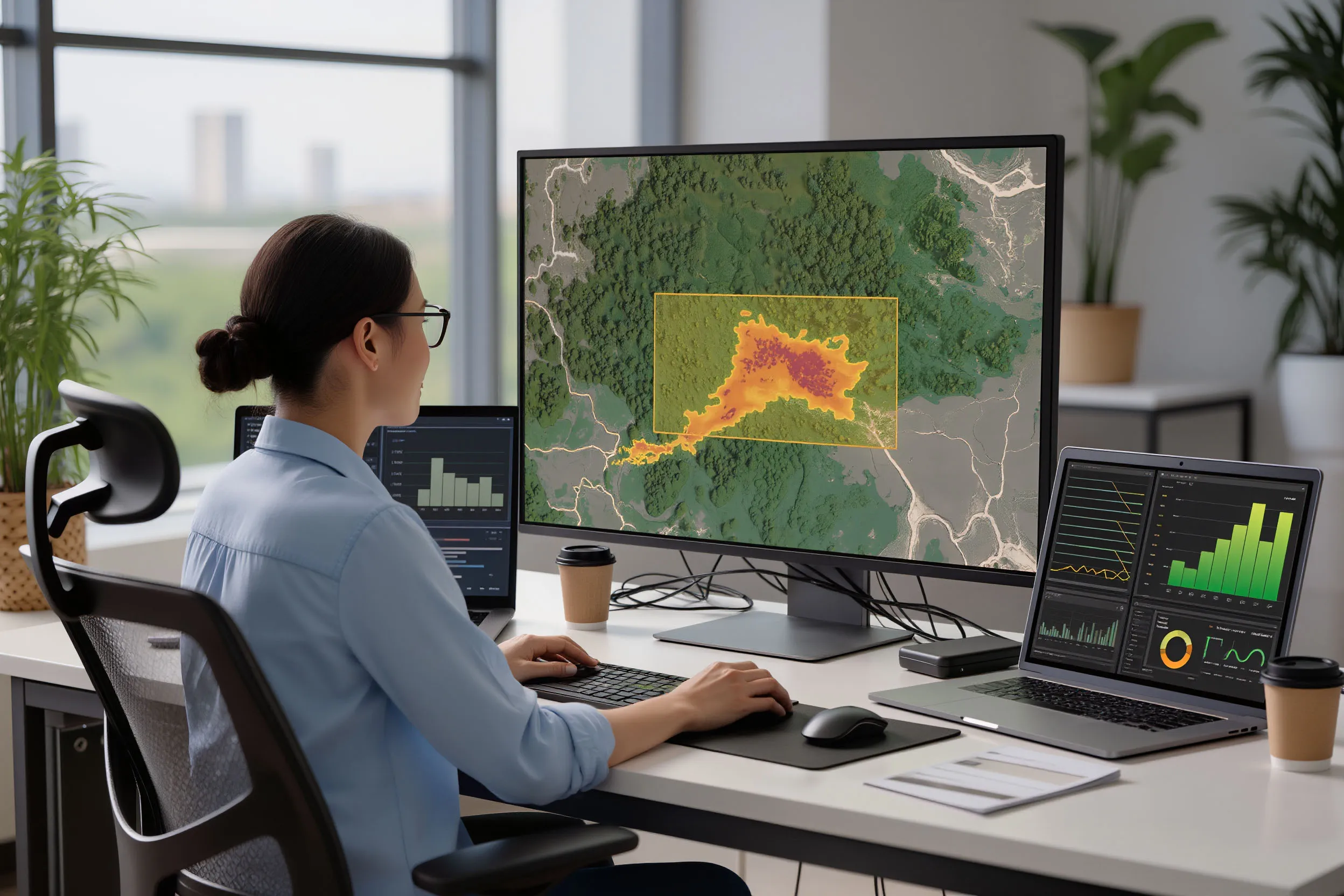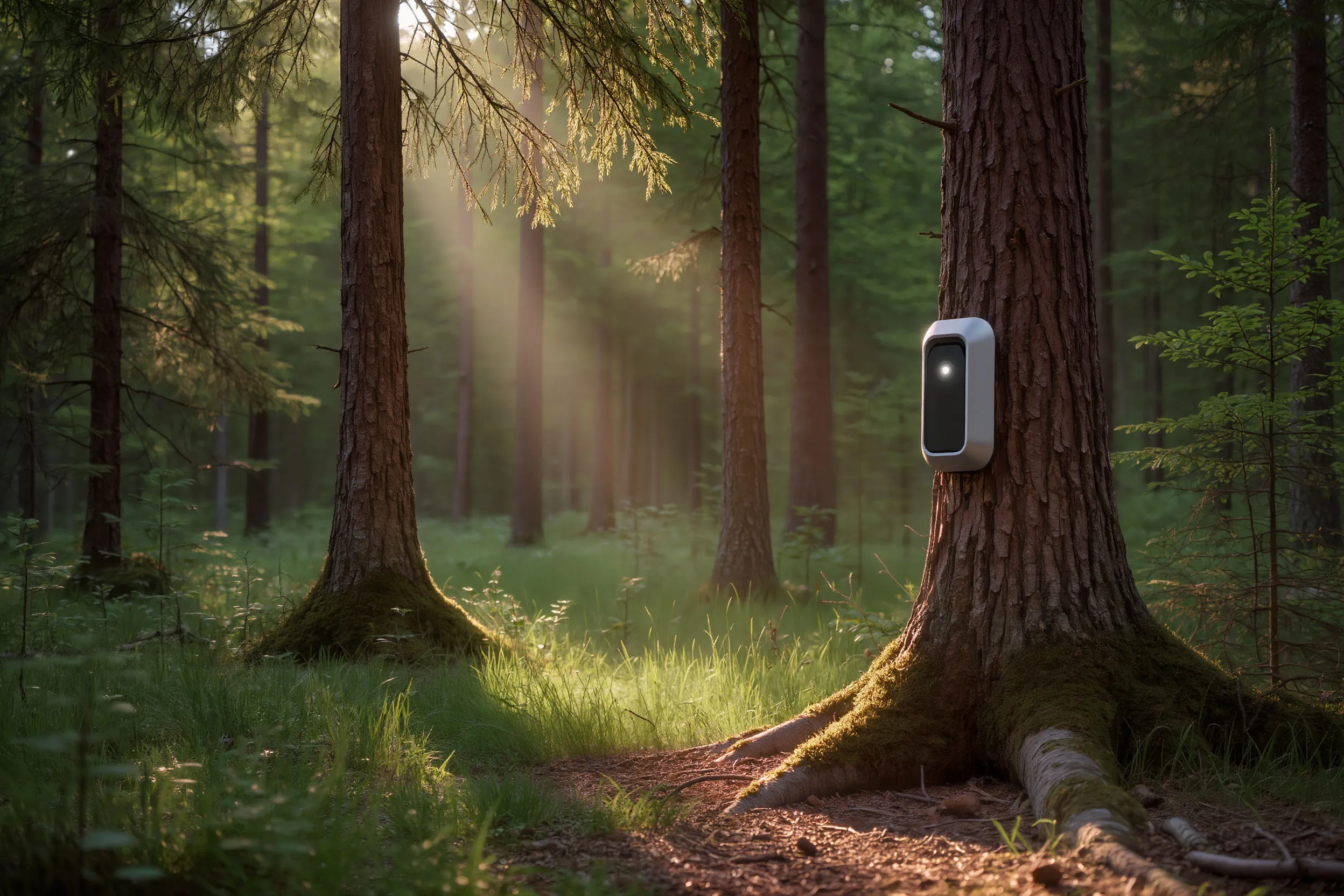Planet’s X‑Ray: How AI Protects the Forests of Komi
In Russia’s Komi Republic — a region where forests cover 87 percent of the land — a new, AI‑powered environmental monitoring framework is reshaping how authorities detect, prevent, and mitigate ecological threats.

Seeing and Protecting Every Tree
At the core of the initiative lies the region’s powerful geoinformation system, which aggregates hundreds of spatial datasets. The regional Geoportal already hosts 466 information resources, 89 percent of which have been updated with fresh geodata.
In 2024, aerial photography was completed across three districts, producing high‑resolution orthophotos now feeding the system’s neural networks.

A key component is the integration with the existing ‘Forest Fires’ system, built entirely on Russian software and already deployed in seven regions. The upgraded platform will use machine vision to scan imagery for traces of fires and illegal activity.
It is currently in test mode, with full deployment expected in 2026. Meanwhile, Komi is modernizing its IT infrastructure to achieve complete import independence by 2028, strengthening its technological sovereignty.
Forests Under the Satellite Lens
The scale of satellite forest monitoring in Russia continues to expand. Today, 50 to 90 percent of forest land in major regions — including Irkutsk, Arkhangelsk, Vologda, Kirov, Nizhny Novgorod, Sverdlovsk, and the Perm and Primorye territories — is under continuous cosmic observation. Rosleskhoz, the national forest agency, set the 2025 monitoring coverage at 300 million hectares, with 90 million under uninterrupted monitoring — a 12.5‑percent increase over 2024.
The ‘Digital Earth’ geo‑platform combines satellite analytics with neural networks to quickly detect wind‑fall zones and illegal logging. Since 2024, Rosleskhoz has incorporated AI into timber‑transport monitoring as well, following a successful pilot in the Perm Territory. The system automatically flags suspicious movements using AI and photo/video capture modules.

A Digital Watchtower
Thanks to remote‑monitoring tools, Roslesinforg employees have identified more than 16,000 illegal logging incidents since 2013 — totaling nearly 8.3 million cubic meters of illegally harvested timber. Faster detection means quicker response times and dramatically reduced environmental and economic damage.
According to Roslesinforg, studies in Buryatia, the Trans‑Baikal Territory, and the Amur Region showed that neural‑network models work 62 percent faster than human analysts and 12 percent more accurately.

Komi’s experience represents a major step toward a modern, technology‑driven forest management system. The refined model can be adapted for countries with extensive forest lands, creating an exportable environmental‑protection solution. The next milestones include deeper algorithm development, integration with emergency‑response systems, and expansion of AI tools into additional government functions. Beginning in 2026, the region will participate in a national experiment to automate routine public‑sector tasks using ready‑made AI solutions.










































